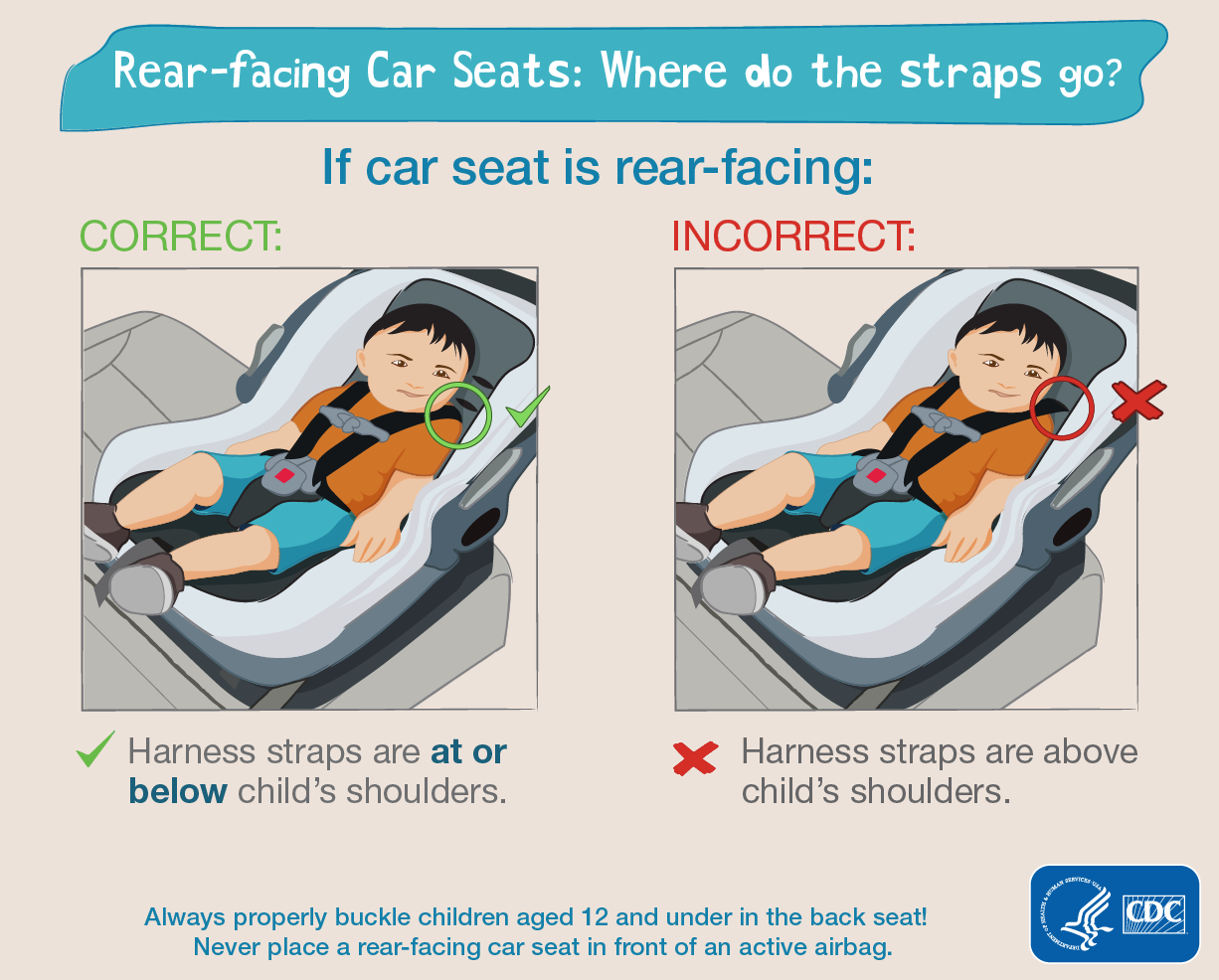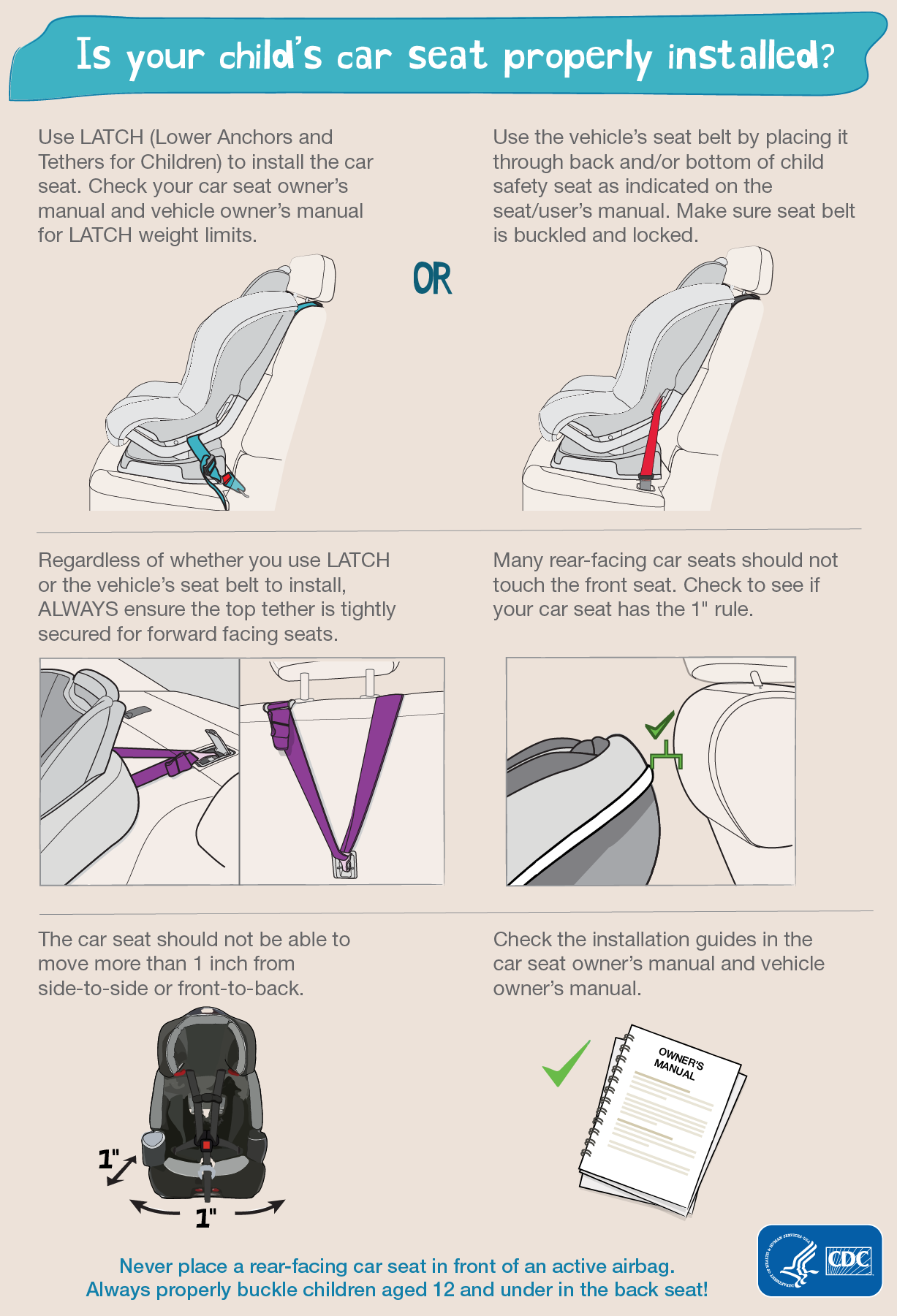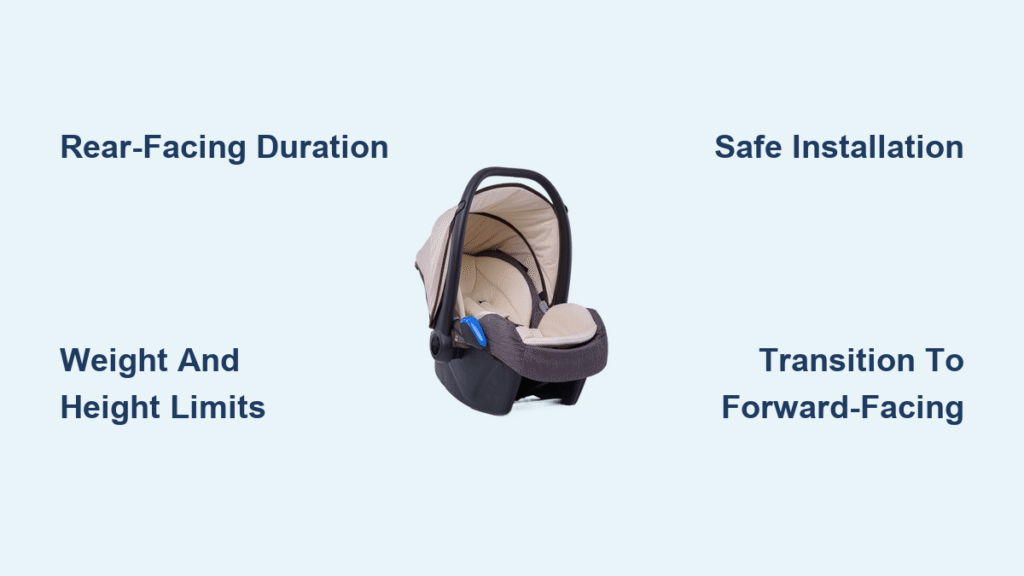As a new parent, the safety of your little one is always top of mind, especially when it comes to car seats. If you’re wondering how long infant car seat rear facing should last, you’re not alone—many parents feel overwhelmed by the varying advice out there. The good news is that keeping your baby rear-facing as long as possible is one of the simplest yet most effective ways to protect them in a crash. According to the American Academy of Pediatrics (AAP), infants and toddlers should remain rear-facing until at least age 2, or until they outgrow the seat’s height or weight limits, providing up to five times more protection for their head, neck, and spine.
In this comprehensive guide, we’ll go beyond the basics to explore the latest infant car seat rear facing recommendations, including why it’s crucial, how to determine the right duration for your child, and practical tips to make the transition smoother. You’ll learn about legal requirements, common myths, and step-by-step ways to check if your baby is ready to forward-face. By the end, you’ll feel confident maximizing rear-facing safety without unnecessary stress, ensuring your family stays protected on every drive.
Why Rear-Facing Car Seats Are Essential for Infants
Rear-facing car seats are designed to cradle your child’s head, neck, and spine in the safest position during a crash, distributing forces across the strongest parts of their body—the back and shoulders. In a frontal collision, which accounts for about 70% of crashes according to the National Highway Traffic Safety Administration (NHTSA), a rear-facing seat absorbs impact through the seatback, reducing the risk of severe injuries by up to 70% compared to forward-facing options.
For infants, whose necks are still developing and heads are proportionally larger, forward-facing too soon can lead to what’s called “internal decapitation,” where the head whips forward violently. Studies from the Insurance Institute for Highway Safety (IIHS) show that rear-facing seats provide the best protection up to age 4 or beyond, making it a non-negotiable for early years. If you’ve ever felt anxious buckling your baby in, know that extending rear-facing time isn’t just recommended—it’s a lifesaver.
The Science Behind Rear-Facing Protection
The biomechanics are straightforward: Babies’ spines are C-shaped at birth, mimicking the rear-facing position, which allows natural support. As they grow, this curve straightens, but until around age 2-4, their neck muscles aren’t strong enough to handle forward-facing forces. A 2023 NHTSA report highlighted that children under 2 in forward-facing seats face a 2.5 times higher risk of injury to the head and chest.
Don’t worry if your child seems uncomfortable or “outgrows” the seat early—many modern infant carriers and convertible seats allow rear-facing up to 40-50 pounds, far beyond the typical 1-year mark. This extended use buys time for safer development.
Current Guidelines for How Long to Keep Infants Rear-Facing

Navigating how long infant car seat rear facing should be can feel confusing with evolving standards, but major organizations agree on the core principles. The AAP and NHTSA both recommend keeping children rear-facing until at least age 2, or until they reach the maximum height or weight limit of their specific car seat—whichever comes first. This “at least” is key; many experts, including the AAP, encourage going beyond age 2 for added safety.
For 2025, these guidelines remain unchanged, but with a push for longer rear-facing due to improved seat designs. The average child can safely rear-face until 3-4 years old in a properly chosen convertible seat, potentially reducing injury risk by an additional 40% per the IIHS.
Age and Weight Limits Explained
- Infant-Only Seats: These are for newborns to about 9-35 pounds and up to 30-32 inches tall, lasting roughly 6-12 months. Always check your model’s label—brands like Graco or Chicco often specify exact limits.
- Convertible Seats: Switchable to forward-facing, these support rear-facing up to 40-50 pounds and 40-49 inches, ideal for extending beyond infancy. For example, the Britax Boulevard allows up to 50 pounds rear-facing.
Legal requirements vary by state: All 50 states mandate rear-facing for infants under 1 year or 20 pounds, but only 20 states require it until age 2. Always prioritize manufacturer and AAP guidelines over minimum laws for optimal safety.
Developmental Milestones and Rear-Facing
While age is a starting point, your child’s growth dictates the timeline. Monitor height (rear-facing harness should be at or below shoulders) and weight via regular checks. If your baby hits the limit at 18 months, that’s fine—safety trumps age. Conversely, a smaller child can rear-face comfortably until 4, as long as the seat fits.
Step-by-Step Guide to Determining Your Child’s Rear-Facing Duration

Assessing how long infant car seat rear facing works for your family involves checking fit, comfort, and readiness. This process takes about 15-20 minutes monthly and ensures you’re not switching prematurely. Start with your car seat manual, then follow these phases.
Phase 1: Check the Seat’s Specifications
- Locate the label on the side of the seat for rear-facing weight (typically 4-40 pounds) and height limits (up to 40-49 inches).
- Weigh and measure your child—use a pediatrician visit or home scale/tape measure. Apps like “Car Seat Checker” from Safe Kids Worldwide can help track this.
- Inspect the harness: In rear-facing mode, the shoulder straps should sit at or just below your child’s shoulders. If they’re at the ears or higher, it’s time to switch seats, not orientations.
Warning: Never exceed limits; doing so voids warranties and increases crash risks by up to 300%, per NHTSA data.
Phase 2: Evaluate Comfort and Fit in the Vehicle
- Install the seat rear-facing using the LATCH system or seat belt—ensure less than 1 inch of movement at the belt path.
- Buckle your child: Their back should be flat against the seat, knees bent naturally over the edge (legs can dangle; it’s normal and safe).
- Test for recline: Infant seats need the correct angle (use the level indicator); convertibles often have adjustable bases.
If your child fusses due to leg position, add a rolled towel behind the seat for support—many outgrow the “cramped” phase by 12-18 months.
Phase 3: Monitor Growth and Readiness Signs
- Track monthly: At well-child visits, ask your pediatrician about spine development.
- Look for outgrowing indicators: Head within 1 inch of the top of the shell, or harness no longer adjustable.
- Consult a certified Child Passenger Safety Technician (CPST) via safekids.org for a free inspection— they can spot issues you might miss.
This phased approach prevents common errors, like assuming a 2-year-old is “too big” when the seat still fits.
Transitioning from Rear-Facing: When and How
Once your child maxes out rear-facing, switching to forward-facing harness mode (around 20-65 pounds) is next—but only if the seat allows. The AAP advises waiting until at least age 2, even if limits are hit earlier, by upgrading to a seat with higher rear-facing capacity.
Safe Transition Steps
- Upgrade if Needed: If your current seat’s rear-facing limit is low (e.g., 35 pounds), invest in an extended-use model like the Clek Fllo (up to 50 pounds). Cost: $300-500, but it lasts 10+ years.
- Install Forward-Facing: Use the top tether to reduce head excursion by 50%. Ensure 5-point harness fits snugly.
- Booster Phase: After forward-facing (around age 4-7), move to a high-back booster until 4’9″ tall.
Important: Avoid “big kid” seats too soon; children under 13 are 40% safer in the back seat.
Prevention Tips: Maximizing Rear-Facing Time
To extend infant car seat rear facing safely, choose wisely from the start. Opt for seats with high rear-facing limits and easy installation—look for “easy-to-use” ratings from NHTSA.
Regular maintenance keeps seats effective: Inspect for recalls at safercar.gov, clean fabrics monthly (air dry only), and replace after any crash. Rotate through family vehicles to ensure consistent use.
Address myths like “rear-facing is only for babies”—it’s for toddlers too. If space is tight, consider vehicles with more rear legroom or seat protectors.
Pro Tips for Rear-Facing Success
- Start with the Right Seat: Invest in an all-in-one like the Graco 4Ever DLX, which rear-faces up to 40 pounds and converts seamlessly—great for growing families.
- Make It Comfortable: Use breathable inserts for hot climates and toys on the seatback for entertainment; this reduces fussiness on long trips.
- Avoid Common Mistakes: Don’t add aftermarket products like extra padding—they can interfere with crash performance. Also, skip “airplane mode” for infants; use the seat on planes for consistency.
- Optimize for Travel: For road trips, stop every 2 hours to check harness fit and offer stretches—rear-facing doesn’t mean discomfort.
- Track Progress Visually: Take monthly photos of your child in the seat to spot growth trends early.
- Involve the Whole Family: Teach siblings or grandparents proper buckling to reinforce habits.
- Budget Smart: Buy used seats only if under 6 years old, no crashes, and with all parts—save 50% without sacrificing safety.
These tips can add months to rear-facing, enhancing protection without extra hassle.
When to Seek Professional Help
If your child has special needs, like low muscle tone, consult a pediatrician or CPST immediately— they may recommend extended rear-facing or custom fits. Signs you need help: Persistent installation wobbles, harness slippage, or if your vehicle model has known compatibility issues (check NHTSA’s vehicle-seat database).
Look for certified technicians through local fire stations or hospitals; sessions cost $20-50 or are free. For complex cases, like multiples in one car, a pro can suggest multi-row setups. Warranty-wise, most seats (e.g., Evenflo) cover defects for 1-2 years—keep receipts. Typical costs for consultations: $0-100, far less than ER visits from improper use.
FAQ
Q: What is the minimum age for forward-facing?
A: The AAP recommends at least 2 years old, but always follow your seat’s limits first. Switching earlier increases injury risk, so if your child fits rear-facing at 2, stay put—many do until 3-4.
Q: Can my 18-month-old switch if they’re over the weight limit?
A: No, prioritize the seat’s specs over age. Upgrade to a higher-limit convertible seat to continue rear-facing safely; options like the Diono Radian support up to 50 pounds.
Q: Is rear-facing uncomfortable for older babies?
A: Initially, bent legs might seem odd, but it’s natural and safe. By 12 months, most adapt; add window shades or mirrors for distraction if needed.
Q: What are the legal requirements for rear-facing in 2025?
A: All states require it until at least 1 year/20 pounds, with 20 states mandating age 2. Check your state’s DMV site, but exceed minimums for best protection.
Q: How do I know if the car seat installation is correct?
A: Use the level indicator, ensure <1 inch movement, and get a CPST check. NHTSA says 80% of seats are misused, so verification is crucial.
Q: Can I use a rear-facing seat in the front seat?
A: Never—airbags are deadly for children under 13. Always install in the back, center if possible for 25% better side-impact protection.
Q: What’s the difference between infant-only and convertible seats?
A: Infant-only are carriers (birth-12 months, portable); convertibles are bulkier but last longer (up to 10 years). Start with infant for newborns, transition to convertible around 9 months.
Q: How often should I replace a car seat?
A: Every 6-10 years per manufacturer, or immediately after a crash. Check expiration dates molded into the seat—don’t risk it for savings.
Alternative Solutions for Rear-Facing Challenges

If vehicle space limits extended rear-facing, consider these options. For tiny cars, slimmer seats like the Clek Fllo (17 inches wide) fit three across.
| Solution | Pros | Cons | Best For |
|---|---|---|---|
| Extended Rear-Facing Convertible (e.g., Britax One4Life) | High limits (50 lbs), all-in-one use, easy install | Heavier (25+ lbs), $400+ cost | Families wanting longevity without frequent buys |
| Slimline Seats (e.g., Diono Radian) | Narrow design, fits tight spaces, up to 50 lbs rear-facing | Less padding, bulkier when folded | Multi-child vehicles or compact cars |
| Infant Carrier + Stroller System (e.g., Uppababy Mesa) | Portable for errands, quick base install | Shorter duration (up to 35 lbs), $300 base | Urban parents prioritizing convenience early on |
| Professional Installation Service | Ensures perfect fit, peace of mind | One-time cost ($50-100), not ongoing | Unsure parents or complex vehicle setups |
Weigh these based on your lifestyle—extended convertibles offer the best value for most.
Keep Your Infant Safe in Rear-Facing Mode
With this guide, you’ve got the tools to confidently navigate how long infant car seat rear facing should last for your family:
– Follow AAP/NHTSA guidelines for at least age 2 or seat limits
– Use step-by-step checks to monitor fit and growth
– Extend with the right seat and pro tips for maximum protection
Rear-facing isn’t a hassle—it’s an investment in your child’s future drives. Start assessing your setup today, and you’ll reduce crash risks dramatically while building good habits early.
Have you extended rear-facing beyond age 2? Share your tips in the comments to inspire other parents! If issues persist, consult a local CPST for personalized advice. Safe travels!





